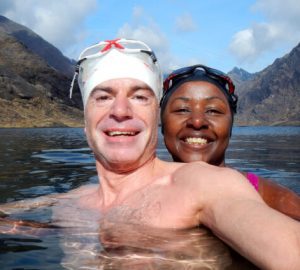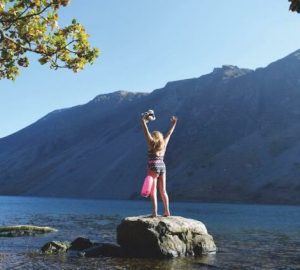Create your own adventure
Outdoor swimming is the perfect vehicle to unleash your sense of adventure. In fact, almost every outdoor swim you do could turn into an adventure. Swimming in nature always exposes you to some element of unknown and the possibility of something unexpected happening – and isn’t that the essence of adventure? Even at supervised and well-managed open water swimming venues, the unexpected can happen. This could be negative – a sudden storm that brews up, forcing an emergency evacuation, for example – or positive, such as a dazzling flash of a kingfisher diving into the water in front of you.
An adventure can range from a quick trip to a local swim spot, followed by a picnic, to a full-blown multi-day challenge that tests your physical and mental limits. The only limits are your imagination, your openness to new experiences and your willingness to embrace the unexpected.
Here are some examples of swimming adventures to get you started.
· Buy one of the many wild swimming books on the market and do the five closest swims to where you live in a single weekend. Or pick a spot you want to visit, book yourself a couple of nights accommodation or camping and do the top 10 swims in that area.
· Swim a mile in each of the biggest lakes in the Britain (Llyn Tegid or Bala Lake in Wales, Loch Lomond in Scotland and Windermere in England)
· Identify a stretch of river and swim the length of it (or swim a river from source to its end, as the Wild Swimming Brothers did for the River Eden).
· At the coast, swim around a headland from one beach to the next.
· Hire a boat for a week and use it to explore an area. Swim whenever it takes your fancy (e.g. the Upper Thames, the Norfolk Broads, the Caledonian Canal or the Mecklenburgische Seenplatte in Germany).
As adventures push us into unknown territory, to make the most of the experience and to ensure you stay safe and well, you need to make a plan. How much planning you do depends on the nature of the adventure and your experience. This doesn’t mean you have to be an amazing swimmer. If you can float, you can have an outdoor swimming adventure – you could play human pooh sticks for example. You just need to design your adventure to suit your swimming skills.
Your priority, always, should be safety. As well as doing all the standard open water risk assessments (see https://outdoorswimmer.com/open-water-safety for more on this), you need to consider any adventure-specific hazards.For example, swimming around a headland could be extremely risky.
Here is a non-exhaustive list of questions you might want to ask:
· Has anyone swum around here before?
· Does anyone have any specific, local knowledge that would be helpful, such as on currents and hidden obstacles (you could ask local kayakers, surfers or anglers for example)?
· Who will support me for this swim and how will they do it? This could be someone on a paddle board, a kayak or a powered boat – and they will need their own risk assessment.
· If I get into difficulties, how will I get out?
· What impact do the tides have on the currents and access to possible entry and exit points?
· How will I stay safe from other water users?
· Roughly how long will it take and am I prepared for at least double that length of time with sufficient food and to cope with the water temperature?
Remember, adventures can be physically and mentally challenging, but they don’t have to be. You can have fun, look around, explore and take time for a break with coffee and cake. Those are probably the best adventures anyway.







